
Here is a link for a video highlight of the WBO Asia Pacific/WBO Oriental Heavyweight title bout between Shane Cameron vs. Monte Barrett.
CLICK ON THE LINK BELOW TO VIEW THE VIDEO!!!!

Here is a link for a video highlight of the WBO Asia Pacific/WBO Oriental Heavyweight title bout between Shane Cameron vs. Monte Barrett.
CLICK ON THE LINK BELOW TO VIEW THE VIDEO!!!!

Two bottles of champagne were whisked into Shane Cameron’s dressing room after he stunned Monte Barrett with a thundering fourth-round knockout to rejuvenate his heavyweight career in Auckland.
With a huge overhand right hook just 18 seconds into the fourth round, Cameron reclaimed the WBO Asia Pacific and Oriental belts in devastating fashion to shock most predictions.
Cameron’s power has long been questioned, but with Barrett needing to be helped to his feet more than a minute after being floored, those jibes are sure to cease.
The 41-year-old Barrett didn’t see Cameron’s shot coming and, after trash-talking his way through the build-up, the American was, for once, short of words.
“It was an amazing victory. I’d like to thank everyone who turned up here tonight to support me. It was an amazing feeling coming out and the ending was spectacular,” Cameron said.
“I said I was going to get these belts back and I did.”
Barrett, who strode to the ring looking like Santa Claus, meanwhile, is now seemingly set for retirement.
“Shane was prepared for the fight. He fought a good fight and my hat goes off to him and his team,” Barrett said after recovering from the brutal punch.
“It was one of those shots that you don’t see coming.”
Cameron’s two-and-a-half week training camp with former British champion David Haye in London clearly paid dividends.
Barrett is considered the gateway to bigger heavyweight clashes and Cameron will now look to capitalise on this remarkable underdog triumph.
The 34-year-old Kiwi had spoken of gaining redemption after his dramatic second-round defeat to David Tua nearly three years ago. This was the defining fight of his career and he more than delivered.
In the tentative opening round, Barrett was content to let the challenger come to him. The American took that first round with two strong overhead right hooks, as Cameron attempted to work the jab and move.
Barrett twice made head-butt claims in the second round, but Cameron found his feet and shook off the initial nerves to hit the mark with strong right-hand hooks.
Both fighters landed heavy shots in the third. Cameron’s home-crowd rose to their feet thinking, on initial glance, he had secured a knockdown but it turned out Cameron had pushed the title holder down.
Few expected Cameron to stop this fight early. But with one punch the Commonwealth Cruiserweight champion defied the odds, declared he will not freeze on the big stage, can step up in class and ignited Kiwi boxing once more.
LIAM NAPIER

 The war of words between New Zealand heavyweight Shane Cameron and outspoken American Monte Barrett began today after the pair went face to face in their first press conference ahead of their July bout.
The war of words between New Zealand heavyweight Shane Cameron and outspoken American Monte Barrett began today after the pair went face to face in their first press conference ahead of their July bout.
Auckland’s Skycity is set to host the fight on July 5, with Barrett set to put the WBO Asia Pacific and WBO Oriental Heavyweight belts, formerly held by Cameron, on the line.
Barrett, who is well known to New Zealand boxing fans after he beat David Tua last August, was quick to taunt the Kiwi today by reciting a poem he had written on his flight to Auckland from his native New York City.
In it Barrett claimed “my fist and Shane’s face will be best friends all night”, but 34-year-old Cameron was confident he would expose the age difference against the soon-to-be 41-year-old.
“I’ll turn you into a 40-year-old man,” Cameron told his opponent in response to the poem. “I’ve seen your last fight, you were slow.”
However the brash American was quick in his response.
“I was slow? I’ve seen your fight with David Tua and you were through the ropes,” Barrett said, referring to Cameron’s infamous second round knockout defeat to Tua in 2009.
“So you need to cut it out buddy,” Barrett continued.
“You got more grey hair than me and I’m older than you, I think you’ve got a lot of problems.”
Taunts aside, fight promoter Dean Lonergan confirmed that the winner of the fight would become No. 1 contender to the New Zealand heavyweight title claimed by All Black Sonny Bill Williams in February.
The rules state that after the No. 1 contender is confirmed Williams will have to defend his belt within 12 months, but Lonergan doubted the rugby star would be up to the challenge.
“I think Sonny would love to have the opportunity to test himself, but I think his manager Khoder Nasser will run like a little girl when presented with the opportunity and I expect inside of 12 months Sonny Bill will throw the belt in, if he still has it,” Lonergan said.
Barrett had previously claimed he would fight Cameron and Williams in the same night and didn’t show much respect for the dual-international as a boxer today exclaiming: “I want to date him, the guy’s really pretty.”
“With Sonny Bill Williams, I just want to punch him in the stomach because he’s a pretty boy and once I hit him I don’t think he’s ever going to worry about putting on another pair of boxing gloves, he’s going to stick to kicking footballs for the rest of his life.”
Cameron was more focussed on the job at hand, aware that the fight is likely to be the toughest challenge he has faced in his 30-fight career, with Barrett having challenged for the World Heavyweight title on two occasions.
A farcry from the New Zealander’s last heavyweight opponent, former league player John Hopoate in 2010, but Cameron said this was about confirming his status as one of this country’s top boxers.
“I want to stamp my authority and legacy on this country, there’s not a lot of great fighters that come out of New Zealand, but I’d like to be up there with the ones that were great in New Zealand.”
http://tvnz.co.nz/othersports-news/trash-talk-starts-ahead-cameron-barrett-clash-4849322
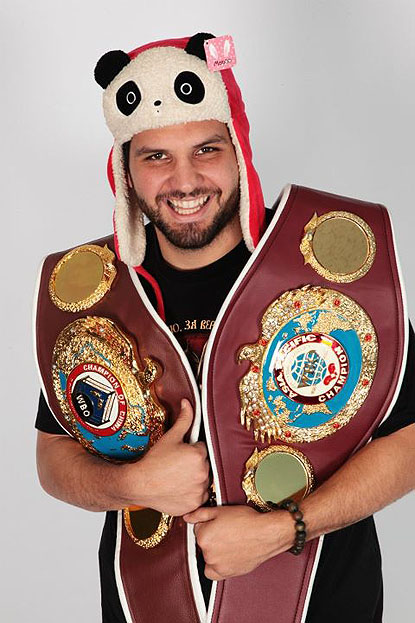
 With the Klitschko brothers and WBA champion Alexander Povetkin having defended their respective titles over the past several weeks, the question now turns to “Whose next?”
With the Klitschko brothers and WBA champion Alexander Povetkin having defended their respective titles over the past several weeks, the question now turns to “Whose next?”
This is a question that becomes increasing more difficult to answer considering that the United States – the historical standard bearer of heavyweight champions – is suffering a heavyweight drought and that heavyweight contenders across the world are getting less and less exposure.
How many American’s had ever heard of top ten heavyweight contender Eric Molina before he fought Chris Arreola? How many boxing fans outside of England were familiar with Dereck Chisora before his fight with Vitali Klitschko?
Maybe, just maybe, the next Rocky
Balboa will emerge from the great unknown to excite boxing fans again and show the world why heavyweights matter.
With that in mind, FightNews is proud to introduce “Rocky Lives!”
Each month, FightNews will profile a relatively unknown, unheralded heavyweight contender with title fight aspirations who might just be the Jeremy Lin of boxing.
This month’s contender is Chauncy Welliver.
FIGHTER PROFILE:
Name: Chauncy “The Hillyard Hammer” Welliver
From: Spokane, Washington
Record: 52-5-5, 20 KOs
Rankings: #6 WBC, #9 WBO
Notable Fights: Moyoyo Mensah (TKO 9), Rob Calloway (W 12), Lawrence Tauasa (TKO 4), Odlanier Solis (LTKBY 9), Billy Zumbrun (W 8), King Ipitan (W 8)
Strengths: Solid defensive fighter with good chin and above average speed. Possess’ very good endurance for a heavyweight of his size. He is the most active heavyweight contender on the planet, with seventeen fights since September of 2009.
Weaknesses: Below average punching power and limited experience against world ranked heavyweights. Welliver has, in the past, come into fights in extremely poor conditioning.
You have to forgive boxing fans in Washington State if they fail to notice that there is a world ranked heavyweight contender living among them. After all, Chauncy Welliver hardly looks the part.
With a constant smile, a disarming demeanor, and a wardrobe that makes him look more like a college hockey fan than a heavyweight contender, Welliver seems like he would be  out of place in the boxing ring. The only giveaway probably would be the WBC logo tattooed on his left arm.
out of place in the boxing ring. The only giveaway probably would be the WBC logo tattooed on his left arm.
But across the Pacific, Welliver is quickly emerging as something completely different: quite possibly the most recognizable heavyweight contender in the world. His October 2011 fight against Rob Calloway in Tianjin, China was viewed by as many as fifteen million viewers on Chinese television and was at near capacity on fight night, with a live attendance of over 5,000 and thousands of fans surrounding the arena to watch the contest on a big screen outside the stadium.
“The sport of boxing in China historically was focused on creating amateur boxers for the Olympics,” commented Welliver’s manager Roland Jankelson. “Essentially the idea for professional boxing in China was introduced with the first WBC fight in China and then the WBO fight that followed. I think that it’s not just the event itself and what happened as a contest but the fact that Chauncy really created sports history on a world stage. No doubt China will become the biggest sports stage in coming years.”
No heavyweight fight of note had been staged in China since 1993 when a badly faded 42-year old Mike Weaver scored a lackluster decision over the notorious Bert Cooper.
But Welliver revamped the image of a heavyweight when he fought in China.
Welliver knows how to engage the public, which added to his appeal in the world’s most populous country. Welliver had no problem embracing the nickname “The Fighting Panda Bear,” even wearing a fury panda hat to press conferences.
“One thing about me, before I was a fighter I was a fan of the sport, and a fan of wrestling,” admitted Welliver about his colorful ring persona. “You almost got to have something to look at, laugh at, something they are going to remember at the end of the day. They don’t remember you without an angle.”
China isn’t the only exotic land where the affable Welliver has won multitudes of fans.
After turning pro in 2001, Welliver remained active, but by in large he appeared to be a regional fighter with a small following in his home state of Washington and almost zero appeal outside of it. Upon building a record of 20-3-3, Welliver had left the Northwest only twice, once for a fight in Louisiana and once to fight in Hawaii. He never fought in any of the major boxing markets like Las Vegas or New York City.
Despite no representation, or perhaps because of it, Welliver decided to relocate and continue his boxing career in a new location in 2004: Auckland, New Zealand.
In the seven years that he fought out of New Zealand, Welliver won over this small, however intensely dedicated boxing community by making it his second home.
“I was looking for a change of scene,” commented Welliver. “and it (New Zealand) was suggested by Shane Cameron and David Tua.”
Welliver was working with David Tua in 2003 as a sparring partner prior to Tua’s second fight with Hasim Rahman and it was through Tua that Welliver met the then undefeated Kiwi prospect Cameron.
“We started sparring and became friends,” explained Welliver. “One day me and Shane just started chatting about where he was from. New Zealand sounded so peaceful and great. It was actually Shane who first brought me down as a sparring partner for one of his fights, at the time I wanted to start seeing the world before my boxing career was over. It was great being able to do that, and as soon as I got there I fell in love with the place.”
Some people were scratching their heads at what seemed to be a perplexing move for the then-21 year old boxer except it proved to be a shot of adrenaline for his career.
“For me I wanted to see the world and New Zealand was a place where I knew a lot of people,” said Welliver. “Plus I knew it was a lot better to be a big fish in a small pond.”
Welliver scored a six round decision over Richard Tutaki in his first fight in New Zealand on December of 2004, and a week later defeated another fighter in Bob Gasio. Within three months Welliver had built up a 4-1 record in the Southern hemisphere and became something of a local celebrity with boxing fans. For the next seven years of his career, Welliver would split his time between Washington and his adoptive home of New Zealand.
“Living in New Zealand is great,” Welliver added “it’s a very clean country and the people are great. I’ve been there for the better part of seven years. Boxing there is kind of an uphill/downhill slide, because when your name is not David Tua or Shane Cameron it’s kind of hard, but right now is probably the hottest time in boxing history in New Zealand. It’s always one extreme to the other.”
Still, the world rankings eluded him, as did major recognition with boxing insiders. Shortly thereafter a relationship developed with the World Boxing Council that would change his career and add a new factor to the equation: Welliver’s almost unrelenting drive to win regional titles.
It started on August of 2005 at the Clearwater River Casino in Lewiston, Idaho when Welliver was matched with the hard-hitting Chris Lewallen (9-0, 9 KOs) for the vacant WBC FECARBOX and WBC Youth title.
Welliver scored a surprisingly one-sided decision victory and suddenly found himself on the radar of one of the major sanctioning bodies. After picking up some relatively meaningless titles like the Canadian American Mexican belt, the Washington State title, and the New Zealand National Boxing Federation title over the next three years, the fighter was poised to take on his first world ranked contender for the WBC International heavyweight title in Berlin, Germany on October 11, 2008 against Odlanier Solis. Welliver, whose battle with his conditioning and weight had plagued him early in his career, was ill prepared to take on the undefeated Cuban.
“I took the fight on ten days notice,” admitted Welliver. “The thing with Solis is, and I can’t lie, I was in New Zealand and I had no money, no fights, nothing. I didn’t do anything after that. I literally gained thirty pounds. I didn’t have the best diet and I wasn’t training. I lived next to a pastry shop and I would go there for breakfast and have a quiche, go home and play video games, and then go eat a pie for lunch. Then I got the call to take the fight.
Welliver weighed in at a near career high of 282 ¼ pounds. It was a troubling sign that a fighter on the day of his most important fight would be in the worst shape of his career. Needless to say, his performance reflected his condition. Solis scored a dominant win over Welliver, winning almost every round before the fight was stopped in the 9th round.
“It was really unfortunate because I remember in that fight, thinking I can really win this thing and then realizing I wasn’t in shape to win it,” he admitted about the last lost of his career. “I’d love to fight Solis again, at the end of the day, I wouldn’t blame him if he didn’t want to fight me again. But I’m (ranked) #6 in the world. For him to get back where he was, he is going to have to fight a guy like me. I’m more than willing to fight him. If he wants a fast track to Klitschko I’ll put my name of the paper and they can fill in the rest.”
“Here’s a guy with no training and no trainer and he flies into Germany and weighs nearly 285 plus pounds,” added Jankelson, who was not working with Welliver at the time, “and he starts winning the fight early and then runs out of gas and complains when the fight is stopped. People don’t have the context. He flew in as the opponent with no training whatsoever, and at 285 he was sixty pounds overweight. What they see on YouTube is not the whole story when you look at the big picture. Right now, it’s a matter of building credibility and I think we are still in that process.”
Welliver then did something that, up to that point, was unheard of in his career. He took a break for a year from fighting to become a sparring partner.
“I was sparring a lot, spending a lot of time over in Germany, it almost made more sense sparring rather than fighting with regards to money. What really got me motivated was when Solis knocked out Monte Barrett in two rounds. I was sparing with Robert Helenius, Marco Huck, and learning a lot, sparring hundreds of rounds. And when I saw that I went nine rounds with this guy on ten days notice and he was looking like a beast against everyone else, it really motivated me. But I was fighting a lot and when you fight a lot you get mentally exhausted.”
It was at this time that Welliver finally decided to dedicate himself to the sport and take his career seriously.
“There had to be an understanding on Chauncy’s part that there had to be a change,” added Jankelson. “He could not compete at the elite level without losing weight. And how do people lose weight? They change their lifestyle and how they eat.”
The next time boxing fans saw Welliver was September 2009 when he stepped in the ring in Auckland against the woefully overmatched David Gemmell weighing in at a more tolerable 266 ¾ pounds. Making up for lost time, Welliver fought three times in October and by November of 2009 he had won the WBO Asia Pacific Interim title with an impressive twelve round decision over Seiaute Mailata. A trip back to the United States followed where Welliver captured the vacant WBC Continental Americas heavyweight title in Oklahoma (March 2010).
Welliver then decided to make another move that was long overdue: He built up a team around him. Signing with manager Roland Jankelson and hiring former heavyweight contender Joe Hipp as his trainer, Welliver finally put together a major league team to help him as he moved into the top ten of the WBC and WBO.
“I met Roland when I was 12-years old and he was a manager of Joe Hipp, and always the big shot manager in the Pacific Northwest.” Welliver said about his relationship with Jankelson, “I knew who Roland was, and I would always chat with him because I wanted to be a boxing businessman. It was great to have that experience. It was cool that he would do that. Years later I gave him a call, still stewing about the Solis fight, and talked to him about possibly getting back on track, and I told him I wouldn’t be bugging him if I wasn’t serious. Before that I sort of went with the Butterbean angle. But I wanted a change, I wanted to be real. We went over to Seattle to meet with him and a few months later we were fighting for the Continental Americas belt.”
With Jankelson now guiding Welliver’s career, his relationship with the WBC and WBO flourished. Over the course of 15 months, Welliver would defend his WBO title twice and his WBC title five times. Although criticism existed over the level of competition, his activity was winning converts with many boxing insiders who recognized that Welliver was a “fighting champion.”
“Me and Roland, the one thing we agreed on is that we need to keep real busy,” commented Welliver.
By June of 2011, Welliver was ready to invade China, taking on Samoan Lawrence Tauasa for the vacant WBC Asian heavyweight title. Welliver dominated the normally durable Tauasa, stopping him in the fourth round. Tauasa had lost a close majority decision to Polish heavyweight contender Albert Sosnowski in a WBF title fight in 2006, and many assumed that he would be a difficult fight however Welliver, weighing in at a career low of 236 pounds, conquered his opponent with ease.
“The interesting thing about him is he was a last minute replacement,” Jankelson said of Tauasa. “The scheduled opponent was not able to complete his visa arraignments and we were already in China. Tuasa was living in Hong Kong, and he didn’t have a visa issue. We were fortunate to get him. I was reluctant to take on that level of opponent without preparing for that level of opponent. But we thought Chauncy was up to the task, and he was.”
Recognizing a winning formula, Jankelson brought Welliver back to China four months later in a fight with former cruiserweight contender and 85-fight veteran Rob Calloway for the interim WBO Asia Pacific heavyweight title and vacant WBO China Zone heavyweight title. Again Welliver came in at a svelte weight (233 ¾) and again he dominated.
“The strategy is visibility,” commented Jankelson. “The more you are out there the more people pay attention to you.”
With a eye opening 52 wins under his belt, coupled with his world ranking, there is little question that Welliver looks poised to make a move in 2012. Although Jankelson wants his fighter to take a short break this month, there are already plans for another WBC Continental America’s title fight in the near future and a possible spot on the undercard of the Monte Barrett versus Shane Cameron fight in New Zealand on May 30th.
Jankelson insists that a major fight against a world ranked contender is in the works in the near future. Regardless if Welliver fights a contender – or a Klitschko – before the end of the year; the question remains: “Can he pull it off?”
“There is one way to beat Klitschko and that is aggression,” commented Welliver on his chances against Wladimir Klitschko. “I’d like to think I’m a better fighter than Corrie Sanders (who stopped Wladimir in two rounds), and the thing is I have a great chin. He can keep on punching but my goal is to make him tired and I would keep on coming all night like a train.”
Welliver and his team realizes that no critic would pick him to defeat a Klitschko brother, considering the Solis fight and his relative lack of knockouts over limited opposition however Jankelson knows that there is something special with his young protégé.
“My strategy is to have a fighter who gets better and better and better,” outlined Jankelson. “What I do know is you got to keep winning and eventually the circumstances will be there and he will get his world title fight opportunity. But it is not just getting the title fight, I want him to win. When he gets there I expect him to win, and he expects to win.”
Welliver is even more optimistic about when he’ll be in line for a title fight.
“It looks like (Wladimir) Klitschko wants Chris Arreola in June. And after that he’s got an open spot. And I can see me being in a November or December fight with Klitschko. I lost the Solis fight, but I went 17-0 since then, I think I earned my way back. I don’t want to jinx myself, but I feel I’m going to get a title fight in 2012.”
Perhaps Welliver and Jankelson are on to something.
Welliver is clearly a new school fighter with an old school mentality. He is one part Walmart style globalization, one part Jack Dempsey era ring activity, one part business savvy entrepreneur, one part gambler, one part All-American kid next door, and one part Chinese rock star all wrapped into one.
The question still remains though: Is there one part world champion in that mix that we don’t know about yet?
Story by David Finger
Photos courtesy of Hannah McConnell with Tot Shot
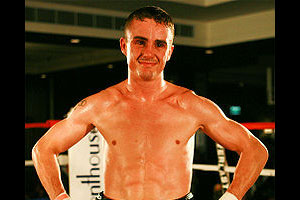
 WBO #5 featherweight Joel Brunker (21-0, 13 KOs) outscored Filipino Ti Yamagata Aguelo (15-7-1, 9 KOs) over twelve rounds at the Richmond Club, Richmond, NSW, Australia on Friday to defend the Interim WBO Oriental title successfully. Scores were 116-112, 116-112 and 115-114. Aguelo came to fight, but Brunker outworked his opponent in most of the rounds. This was the third opponent from the Philippines in 2011 that Brunker has defeated which include Reynaldo Belandres and Freddie Martinez. Brunker is now scheduled to box on undercard of IBF middleweight champion Daniel Geale’s next title defense on February 29, 2012. Brunker is managed by Angelo Di Carlo.
WBO #5 featherweight Joel Brunker (21-0, 13 KOs) outscored Filipino Ti Yamagata Aguelo (15-7-1, 9 KOs) over twelve rounds at the Richmond Club, Richmond, NSW, Australia on Friday to defend the Interim WBO Oriental title successfully. Scores were 116-112, 116-112 and 115-114. Aguelo came to fight, but Brunker outworked his opponent in most of the rounds. This was the third opponent from the Philippines in 2011 that Brunker has defeated which include Reynaldo Belandres and Freddie Martinez. Brunker is now scheduled to box on undercard of IBF middleweight champion Daniel Geale’s next title defense on February 29, 2012. Brunker is managed by Angelo Di Carlo.
By Ray Wheatley — World of Boxing
http://www.fightnews.com/Boxing/wbo-5-featherweight-joel-bunker-stays-unbeaten-102744
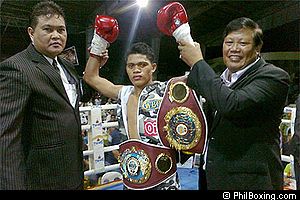
 It’s been a great WBO Convention for the Philippines with “Promoter of the Year” Sammy Gello-ani joined by two other boxers and a referee at the recently concluded WBO Awards ceremony in Puerto Rico.
It’s been a great WBO Convention for the Philippines with “Promoter of the Year” Sammy Gello-ani joined by two other boxers and a referee at the recently concluded WBO Awards ceremony in Puerto Rico.
WBO Asia Pacific vice president Leon Panoncillo told the Manila Standard that undefeated 22 year old Froilan “The Sniper” Saludar who has a record of 13-0-1 with 10 knockouts was named WBO Asia Pacific and WBO World Youth flyweight “Boxer of the Year.”
Saludar won the Asia Pacific title with a rousing 10th round TKO over Gabriel Pumar in an exciting title fight at the Island Cove Resort in Cavite telecast by AKTV IBC Channel 13 last August 6.
Saludar had earlier won the vacant Youth title with a sensational 1st round TKO over Thailand’s Liempetch Sor Veerapol on the top rated weekly boxing show “The Main Event” also telecast on AKTV IBC Channel 13.
Undefeated 19 year old southpaw Jerwin Ancajas was named WBO Asia Pacific Youth bantamweight “Boxer of the Year” for winning the title by a unanimous ten round decision over Rex Tito last April 16.
Referee, lawyer Danrex Tapdasan was awarded the WBO Asia Pacific “Official of the Year” and commended as “ as one of Asia’s most
Photo: Froilan Saludar (C) with WBO Vice-President Leon Panoncillo (L) and Promoter Samson Gello-ani (R).
By Ronnie Nathanielsz
http://philboxing.com/news/story-62068.html
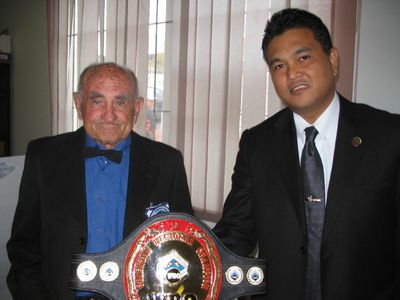
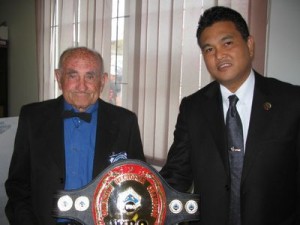 World Boxing Organization Asia Pacific vice president Leon
World Boxing Organization Asia Pacific vice president Leon
Panoncillo has given the WBO Convention in Puerto Rico a
bright report on the achievements of the regional
organization the past year.
The consensus at the Convention was that Panoncillo’s
efforts in the Asia Pacific region had been marked by
success through 2011 and it was considered a banner year in
terms of WBO regional titles with the Philippines playing a
prominent role along with Thailand. China is considered an
emerging force in the region.
Panoncillo announced that the WBO was staging three times
as many title fights as other regional boxing organizations
such as the Oriental Pacific Boxing Federation and the Pan
Asian Boxing Association and stated that this success
primarily due to the wholehearted support of the Philippines
and Thailand.
The WBO Asia Pacific vice president noted that the
organization is continuing to grow and develop in the
Asia Pacific region. There have been indications this year
that Japan which previously recognized only the WBC and WBA
is changing its attitude towards the WBO
Panoncillo made special mention of the WBO Asia Pacific
Championships which held no less than 27 fights in 2011. He
also mentioned the newest creation which is a title belt for
the WBO Asia Pacific Youth Championships which has held ten
title fights so far this year.
There was a total of some 59 championship fights in the
Asia Pacific region in 2011 with 21 WBO Oriental title
fights. Panoncillo revealed total revenues of $56,000.
The regional vice president said that many fighters were
benefiting from their support and involvement with the WBO
and that several Asian fighters who battled for regional
belts are moving up to fighting for and winning world
titles.
WBO president Francisco “Paco” Valcarcel was impressed with
Panoncillo’s performance that he appointed him as WBO
supervisor for the last title defense of welterweight
champion and pound for pound king Manny Pacquiao against
Shane Mosley.
http://insidesports.ph/updates/panoncillo-gives-wbo-convention-bright-report-on-the-asia-pacific-region/
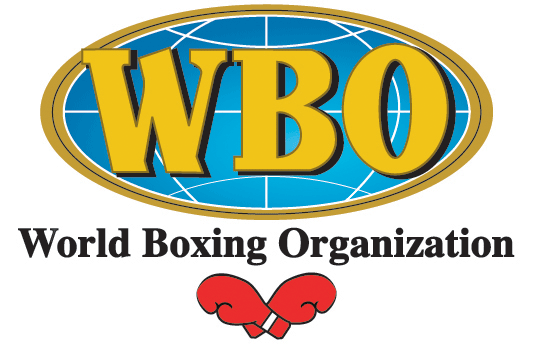
SAMSON Gello-ani proved that he is one of the best promoters in the Asian region after he was awarded the WBO Asia Pacific Promoter of the Year.
The awarding took place during the “Back with a Vengeance” fight card featuring Marvin “The Marvelous” Sonsona, who won against Mexican Carlos Jacobo at the Hoopsdome in Lapu-Lapu City last Saturday.
The award is Gello-ani’s fifth straight Promoter of the Year title. His first award was won in 2007.
“I was a consistent WBO bout promoter and they find me very hardworking when it comes to promoting world class fights,” said Gello-ani.
Gello-ani mentioned that he has already staged numerous WBO championships here and outside the country, including the Asia Pacific and Oriental championships. This year he promoted an Asia Pacific and Oriental championship bout.
Gello-ani started promoting boxing in 1987 by doing amateur fight cards in Cebu city and stepped up to pro boxing in the early 1990’s under boxing patron Antonio L. Aldeguer.
“I worked hard for this job, maybe that’s why I am here right now showcasing world class boxers to the Filipinos worldwide.” /CORRESPONDENT DALE G. ROSAL
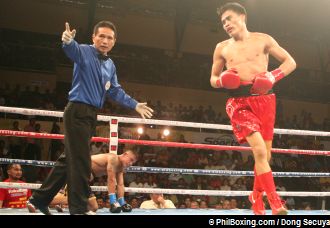
NEW boxing sensation Lorenzo “Thunderbolt” Villanueva and two other Filipino fighters have been included in the Manny Pacquiao-Juan Manuel Marquez fight card on November 12 in Las Vegas, Nevada.
Manny Pinol, Villanueva’s manager, said it was Pacquiao himself who selected his fighter to be in the undercard of his much-awaited third meeting with the Mexican Marquez.
Villanueva, the undefeated World Boxing Organization (WBO) Oriental featherweight champion, is now in Baguio training with Pacquiao.
Aside from Villanueva, fighting in the Pacquiao-Marquez card will be Philippine welterweight champion Dennis Laurente and junior bantamweight Fernando Lumacad.
Villanueva, Laurente and Lumacad were selected for different reasons.
For Villanueva, Pacquiao said he would like to give the 24-year-old orphan a chance to prove himself in tougher fights in America.
Villanueva, a southpaw just like Pacquiao, holds an impressive record of 21 wins with 20 knockouts and is now being handled by Hall of Fame boxing trainer Freddie Roach and renowned physical conditioner Alex Ariza.
For Laurente, the fight on November 12 will determine whether he will finally earn the chance to fight for the world title at a late age of 34.
Laurente, a right-hander, holds a record of 40 wins, 21 KOs, four losses and five draws.
Perhaps the most controversial choice of the Pacman to fight in his undercard against Marquez in the prime venue of boxing which is Las Vegas is General Santos City boxer, Fernando Lumacad.
The 25-year-old Lumacad caused an embarrassment to Philippine boxing when he yielded in the third round of his fight against the legendary Mexican warrior Jorge Arce. He even asked for Arce’s robe as a remembrance after the fight.
Of the three, it will be Laurente and Villanueva who will be closely watched in their fights in Las Vegas.
Villanueva is a product of the grassroots boxing program which Pi¤ol started when he was governor of North Cotabato from 1998 to 2007.
Fighting in a foreign land and under the big spotlight in Las Vegas, his November 12 outing will be an opportunity for boxing fans to dissect Villanueva, a shy fighter from the marshlands of Midsayap in North Cotabato. (CRAM)
http://www.sunstar.com.ph/davao/sports/2011/09/25/villanueva-pacquiao-marquez-card-181486

In a fight that left the crowd at the edge of their seats, underdog Jeffrey Cerna (W10(4)-L3(1)-D0) scored an upset by dominating the more experienced Louie Bantigue (W21(12)-L14(5)-D7). Both warriors exchanged knockdowns in the later rounds but two valid knockdowns scored by Cerna were not scored by the referee. Cerna appeared to be the stronger fighter but Bantigue had the better speed. It was power and stamina versus speed but in the end, Cerna appeared to have the better conditioning and took home most of the rounds. After the final bell, the judges came out with a split decision verdict in favor of the new WBO Oriental Flyweight Champion, Jeffrey Cerna.
In a non-title flyweight match, Bobby Concepcion escaped a controversial draw versus Ronnie Rex Dalot. It was Dalot who dominated but the fight turned ugly with several low blows from both corners. Another fight ended in a technical draw after Jethro Pabustan of Touch Gloves Stable suffered a nasty cut from an accidental clash of heads against Rodel Quilaton.
In the other bouts, Nino Valenzuela won via Majority Decision versus Dodoy Alapormina. Rennel Flechero stopped Mabert Paulino via retirement. Karlo Maguinto outpointed Edwin Mondala and won via Unanimous Decision. Macre Gandiongco knocked out Mardi Zulita in the fourth and final round. In the opening match, Carlean Rivas won her debut fight via UD against Honey Mae Bermoy.
The fight was brought to us by Arci Promotions and GMA7. The event will be televised on Sunday via GMA News TV Channel 11.
http://philboxing.com/news/story-58821.html
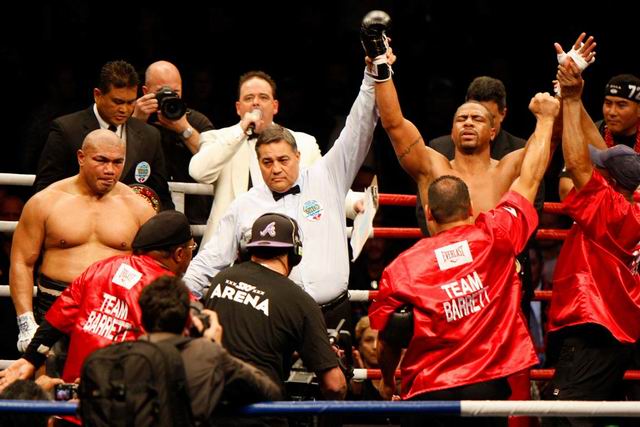
Telstra Clear Events Centre, Manukau City, New Zealand – Heavyweight veteran Monte Barrett (35-9-2, 20KOs) won a twelve round unanimous decision over David Tua (54-4-2, 43KOs). The scores were 114-113, 115-112 and 115-112. Barrett captures the WBO Asia Pacific and WBO Oriental heavyweight titles.
The fight was a rematch of their twelve round majority draw from last July in Atlantic City, which saw Tua get dropped for the first time in his career in the twelfth round.
Tua was very sluggish from the very start. Barrett had few issues with landing his punches. A cut opened up above Tua’s right eye in the third round. Tua began to pick up the action in the fourth.
Barrett was using his jab to control the action. Tua was making the mistake of resorting to a heavy amount of counter-punching. Tua landed a few good lefts in the sixth, but Barrett took them well and countered back.
Tua started landing his right hand in the seventh. Barrett switched his stance to avoid further punches. Barrett continued to use his jab to set up other punches. He was moving, making Tua follow and miss.
Tua started to rally again in the tenth round with big left hands there were landing. He hit Barrett with a big combination in the final minute and Barrett was in big trouble. Barrett stayed on the move with Tua not throwing anything. Instead of trying to finish Barrett off, Tua was playing to the crowd.
They were trading punches in the eleventh round. Barrett’s legs did not look steady and yet he was still outlanding Tua during exchanges. In the final ten seconds, Tua caught Barrett again and started working him over until the bell.
Tua, knowing that he was likely behind on the cards, was looking for one big shot in the twelfth. Barrett was holding and surviving. In the final minute, Tua landed a big combination of punches to send Barrett down for the first time in the fight. Barrett barely made it up and somehow Tua once again let him off the hook with thirty seconds left and he survived until the final bell.
By Chris LaBate
http://www.boxingscene.com/barrett-likely-ends-david-tuas-career-with-big-win–42608
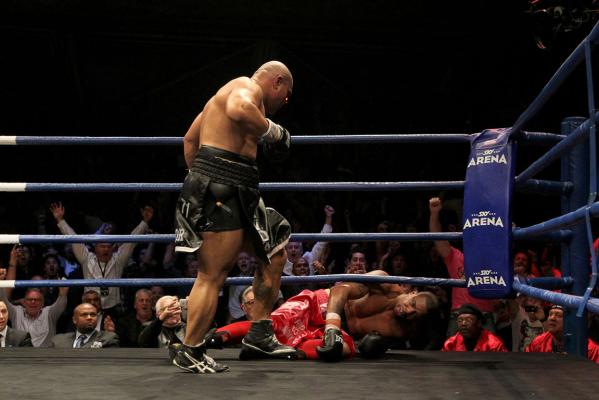
On his home patch in South Auckland, with blood and a smirk splattered on his face, David Tua was shocked when his return to the heavyweight division was quashed tonight with American Monte Barrett awarded a unanimous point’s decision.
Barrett is the only man to knock Tua to the canvas and appeared to be out on his feet in the last rounds.
He was knocked down in the 12th and struggled to get up but must have done enough in the early rounds to convince the judges.
The sold out crowd’s raptures turned to stunned glances when the decision was announced. They thought their Samoan-born Kiwi had his redemption revenge.
Tua bided his time and picked his moments, slowly building his power and intent as the bout progressed, but wit the loss, just the fourth of his career, means he gives up the WBO Asia Pacific and Oriental belts. The 38-year-old said he would not retire but will take time out to consider his credible future in the sport.
Barrett kept the initially inactive and sluggish Tua at bay with his reach advantage and left jabs in the first three rounds. With a flurry of punches and his go-to overhand right hook bearing down, Barrett had Tua bleeding from a small cut above his right eye. The visitor was well on top, but briefly.
Tua was patient. He waited for an opening, a weakness in Barrett’s defence. The infamous left hook made a belated appearance at the end of the fourth round, as he lifted.
But Tua began to consistently rock the 40-year-old New Yorker with powerful combinations and a busier work rate. Barrett slipped behind in the points as the fight changed complexion. “Two Gunz” was out of ammunition, but he did enough early.
Tua hurt Barrett in the 10th round, pinning him against the ropes. He raised his arms in delight to the crowd and thought it was in the bag. Barrett appeared done. The judges thought otherwise.
The 3000-strong, vocal crowd waited through the undercards expectantly and booed Barrett on arrival. Tua received a standing ovation. There was an airy, yet electric atmosphere about this belt. It was career-defining for both fighters. The winner would carry on; the twilight loser faced an uncertain future.
Tua admitted, from his heart, Barrett should have won their first fight in Atlantic City last year, which led you to believe he was motivated and would deliver. He did that, but left it too late.
He needed a statement, either a knockout or convincing point’s victory, to ripple the division of giants that has become stagnant. His last convincing performance was too long ago, against Shane Cameron in October, 2009. Ultimately the 38-year-old was chasing a second world title shot after his defeat to Lennox Lewis in 2000. This could have been a stepping stone. He will now struggle to gain another.
In matching records alone, Tua’s impressive 52-3-2 scorecard dwarfed Barrett’s 34-9-2 in both experience and class. But records often don’t make it into the ring. As was the case tonight.
Ad Feedback
New Zealand’s next heavyweight hope, 19-year-old amateur Joseph Parker, easily took care of Australian Nathan Mackay in a three round contest. Parker forced Mackay into two standing eight counts and spit his nose as he builds up to next month’s World Games in Azerbaijan, where he can qualify for next year’s London Olympics.
By: LIAM NAPIER
http://www.stuff.co.nz/sport/other-sports/5441460/David-Tua-loses-on-unanimous-points-decision

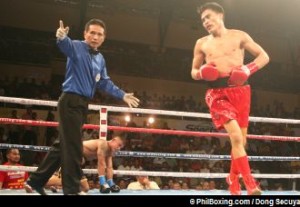 Lapulapu City – Lorenzo “Thunderbolt” Villanueva, the reigning World Boxing Organization (WBO) Oriental Featherweight champion, made a short work of Indonesian Junior Lightweight champion Eddy Camaro by scoring a quick knockout in the first round of their 10-round bout at the swank and fully air-conditioned Hoops Dome in this historic city Saturday night.
Lapulapu City – Lorenzo “Thunderbolt” Villanueva, the reigning World Boxing Organization (WBO) Oriental Featherweight champion, made a short work of Indonesian Junior Lightweight champion Eddy Camaro by scoring a quick knockout in the first round of their 10-round bout at the swank and fully air-conditioned Hoops Dome in this historic city Saturday night.
Villanueva, a young southpaw from Midsayap town in North Cotabato, immediately strutted to the center of right after the bell sounded to start round 1, threw two or three looping lefts and rights that missed before he connected with a thunderous right to the Indonesian champion’s midsection.
As Comaro backpedalled to his corner, Villanueva pursued the Indonesian and unleashed a three punch combo, a left to the back of the ear of Comaro followed by a right uppercut and finally a thunderous left just above the right neck, sending the Indonesian fighter to his knees with his left hand hanging on to the ropes and obviously unconcious.
Referee Teddy Alivio counted out Comaro at 1:02 of the first round giving the undefeated Villanueva his 20th knockout win in 21 victories.
http://philboxing.com/news/story-58124.html